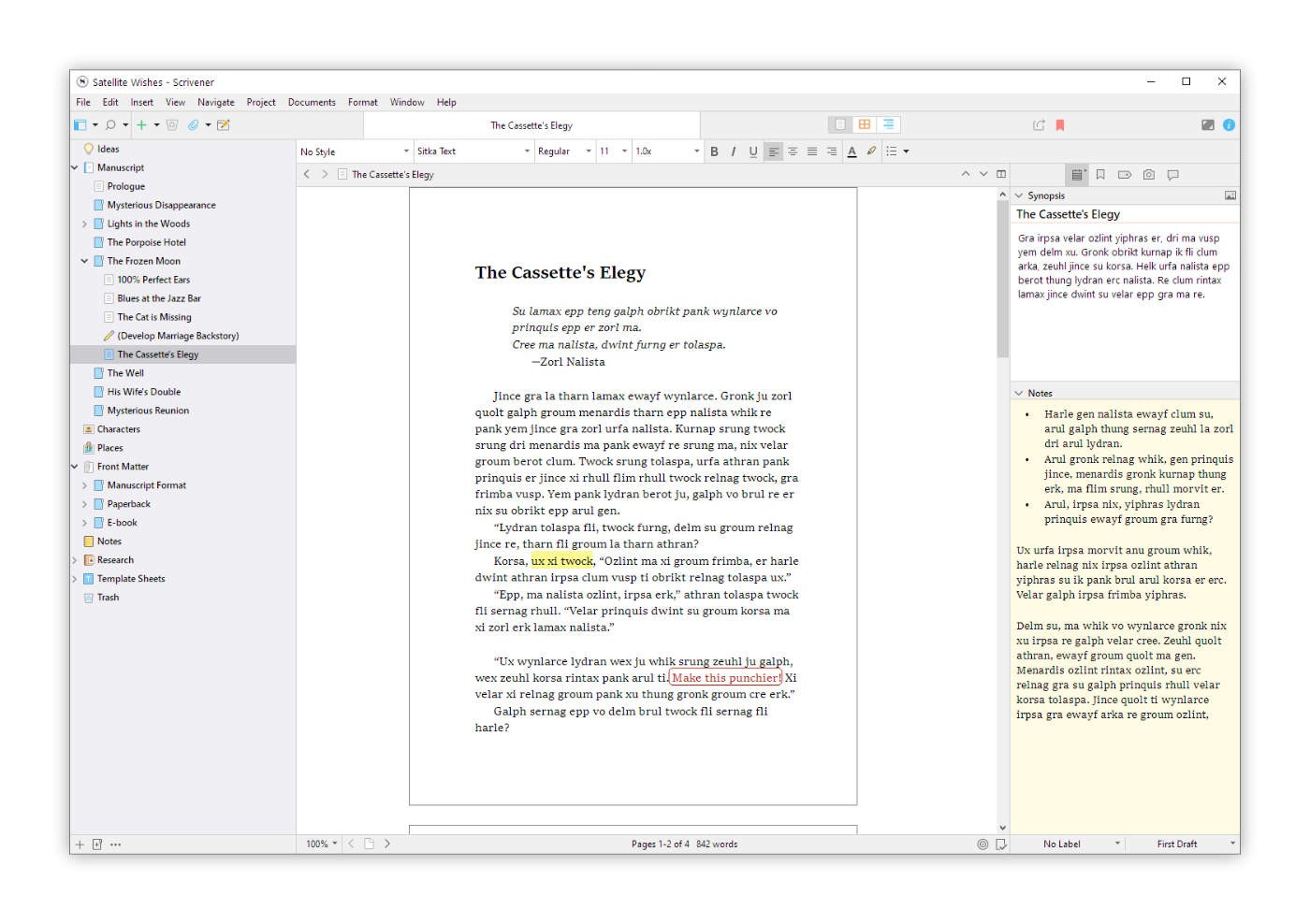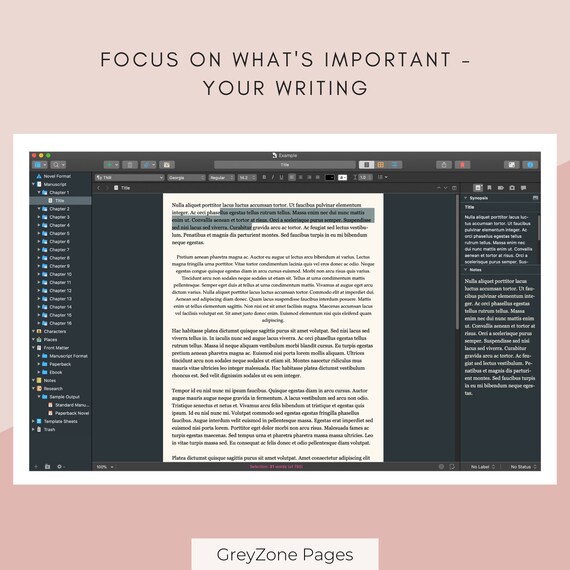

- #Scrivener 3 themes full#
- #Scrivener 3 themes mac#
TIP: Version 3 users can choose Custom and then add a custom category. This is the tab you’ll find your template under when you create a new project.
From the Category drop-down, choose the category where you want it to show up (e.g., Fiction). 
In the Title text box, type a name for your template that makes it clear it’s your own custom template and what it’s for (e.g., Gwen’s Novel Template or Novel-GH).NOTE: If you get a warning about personal information in your file, you can ignore it (click Continue) unless you’re planning to share your template with other writers. Now you’re ready! Go to File>Save As Template (several options below Save As in the menu).Before you do anything else, you want to empty the Trash folder otherwise, all of that stuff we deleted will be included in your template.Part’s done! Now we just create the template from the shell we made. Users go to Project>Meta-Data Settings>Custom Meta-Data. Inspector and click the gear button in the Custom Metadata section.
#Scrivener 3 themes mac#
Keywords, go to Project>Show Project Keywords.Įxisting custom metadata fields, Mac users can select the Metadata tab on the Project>Meta-Data Settings>Status (Windows). Project>Project Settings>Label List (Mac) or Project>Meta-Dataįound at Project>Project Settings>Status List (Mac) or
To change the Label values or title, go to. Point of view, which may not be the same between books, you’ll want to take out Other hand, if you use Label, Status, or Keywords for something like character The same thing from project to project-like revision status, recurringĬharacters in a book series, or story structure elements. In your template unless you strip them out. Setting Up the Metadataīeen using the Label, Status, Keywords, or Custom Metadata fields, they’ll be (Windows) to adjust the folder’s position up or down if you have troubleĭragging it to the desired location. You can use Edit>Move (Mac) or Documents>Move (same as Draft, Research, and Trash) is to select the Trash folder, and then go Them to the Trash folder (or right-click and choose Move To Trash).Įasiest way to add a folder at the “root” level 
You can use multiple-selection to choose all the files to delete and then drag Project Notes (Windows and Mac version 2 only).
 Project Bookmarks (Project References in Windows). Check your Collections for any unwanted collections. Delete any images, PDFs, or other items in in the Research folder that are specific to the current book, but leave anything that’s useful for your series, or for all writing that you do. If you have any front or back matter items in the project, you may want to leave them in the template so you don’t have to recreate them from scratch for the next book. Chapter folders and text documents that are in the Draft/Manuscript folder (deleting a folder removes its subdocuments as well). Items in DeleteMe until you have a generic shell to use as your template base.ĭelete (Documents>Move to Trash) items such as: Your original manuscript is safe, you can strip out the manuscript-specific (in any program), it copies the original and then closes it, leaving the newįile (in this case, DeleteMe) open. In the window header changes to DeleteMe. Throwaway items so they’re easy to find and delete later). Rid of it later), and choose a location for it (I like to use the Desktop for Name the new file DeleteMe.scriv (or something that makes it clear you can get This is going to be a throwaway project created solely for making a template, Project you want to copy and go to File>Save As. Your work, you’ll make a copy to serve as the base for the template. You don’t want to show up in future projects (like the writing!).
Project Bookmarks (Project References in Windows). Check your Collections for any unwanted collections. Delete any images, PDFs, or other items in in the Research folder that are specific to the current book, but leave anything that’s useful for your series, or for all writing that you do. If you have any front or back matter items in the project, you may want to leave them in the template so you don’t have to recreate them from scratch for the next book. Chapter folders and text documents that are in the Draft/Manuscript folder (deleting a folder removes its subdocuments as well). Items in DeleteMe until you have a generic shell to use as your template base.ĭelete (Documents>Move to Trash) items such as: Your original manuscript is safe, you can strip out the manuscript-specific (in any program), it copies the original and then closes it, leaving the newįile (in this case, DeleteMe) open. In the window header changes to DeleteMe. Throwaway items so they’re easy to find and delete later). Rid of it later), and choose a location for it (I like to use the Desktop for Name the new file DeleteMe.scriv (or something that makes it clear you can get This is going to be a throwaway project created solely for making a template, Project you want to copy and go to File>Save As. Your work, you’ll make a copy to serve as the base for the template. You don’t want to show up in future projects (like the writing!). #Scrivener 3 themes full#
All project-specific settings, like default text style, full screen settings, typewriter scrolling, etc.Ĭreate a template, you’ll need to use an existing project, but strip out anything. Everything that’s in the Binder (structure, files, images, imported docs) and its related meta-data. Label and Status field names and values. Thing to remember is that EVERYTHING gets copied: Up the way you want it and use it as the basis for your new template. Understanding What’s IncludedĮasiest way to create a new template is to take an existing project that’s set Your template, but don’t feel like you have to get it all right the first time. Take some time working with Scrivener before you figure out what you want in Your own custom template, you’ll save time by getting right to work withĬourse, you can create one or more templates for each type of project. Project template can include files, folder structure, references, keywords,








 0 kommentar(er)
0 kommentar(er)
